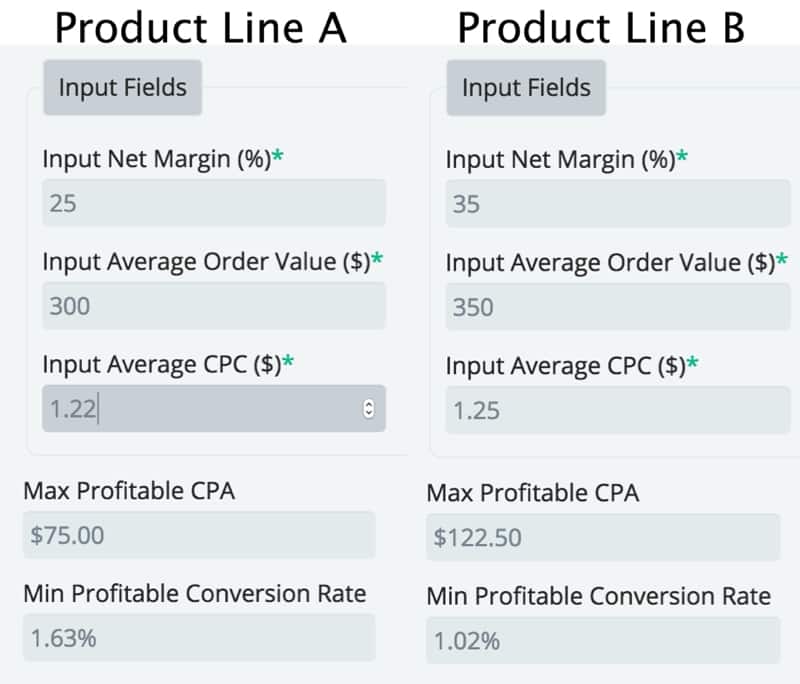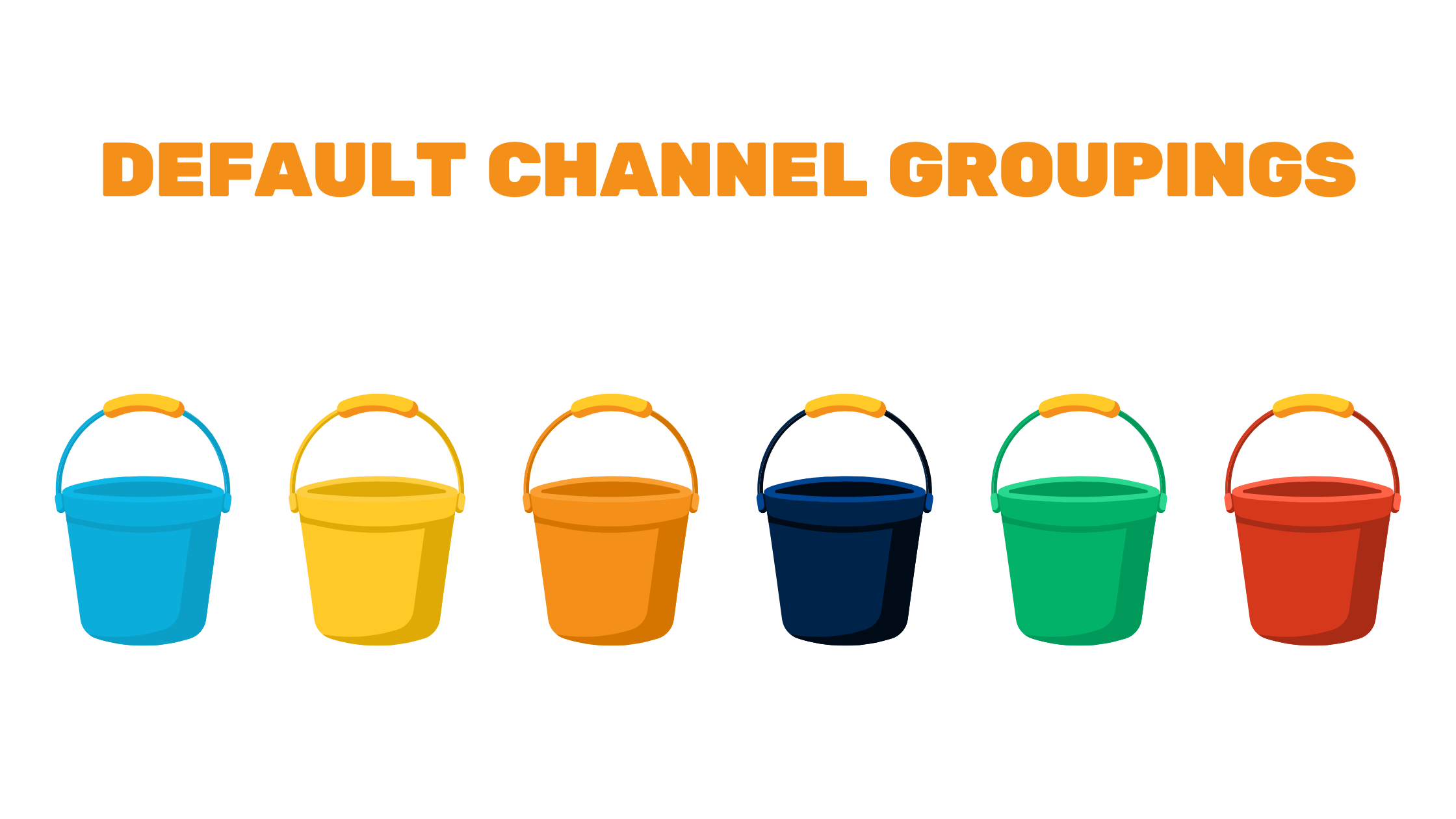As one of three primary metrics that determine what your profitable conversion rate is, this is the one that involves the least hassle.
The dynamic is pretty straightforward: the more your margins shrink, the higher your conversion rate needs to be in order to profit on advertising spend. For some businesses, margins are inflexible and uniform across all products or services. If that is the case, the goal should be to increase average order value as much as possible while driving down CPCs.
However, if there is any room to open up your margins, it can really be the quickest “win” for an ad account. The idea of opening up margins for an ad account has less to do with changing your prices and costs and more to do with which keywords you’re primarily paying for — in other words, shifting advertising spend to the best margin campaigns.
Example of “Changing” Net Margins in an Ad Account
Let’s say you have product line A with 25% profit margins and product line B with 35% profit margins.
Product line A
- Net Margin is 25%
- Average Order Value (AOV) is $300
- Average CPC is $1.22
Product Line B
- Net Margin is 35%
- AOV is $350
- Average CPC is $1.25

As you can see, our ad spend is going to have to work a lot harder to result in profit for product line A than for product line B, despite very close CPCs.
We have campaigns set up for both of these product lines in our ad account that are both spending the same amount and convert about the same. Product line B is much closer to hitting an achievable conversion rate, so we could look to shift ad spend toward this campaign and remove ad spend from the campaign where margins make it too difficult to profit on our ad spend.
This will result in the net margin for keywords we bid on to shift closer to 35% than 25%, and a slightly lower conversion rate will end up being okay once we look at total profits from advertising.
REMEMBER: Conversion rates do not exist in a vacuum. Work toward your goals and adjust your benchmark values to keep ad spend profitable.




